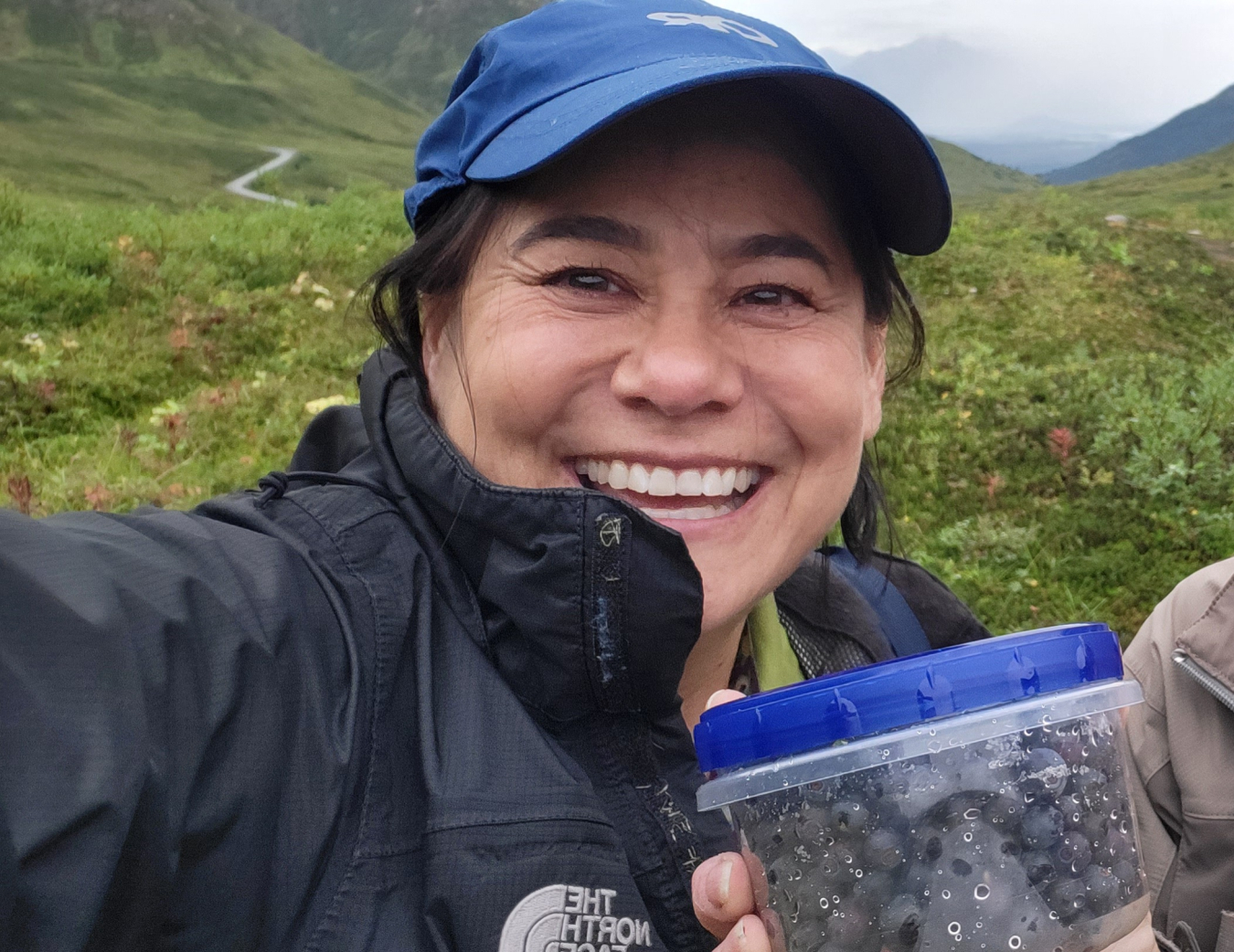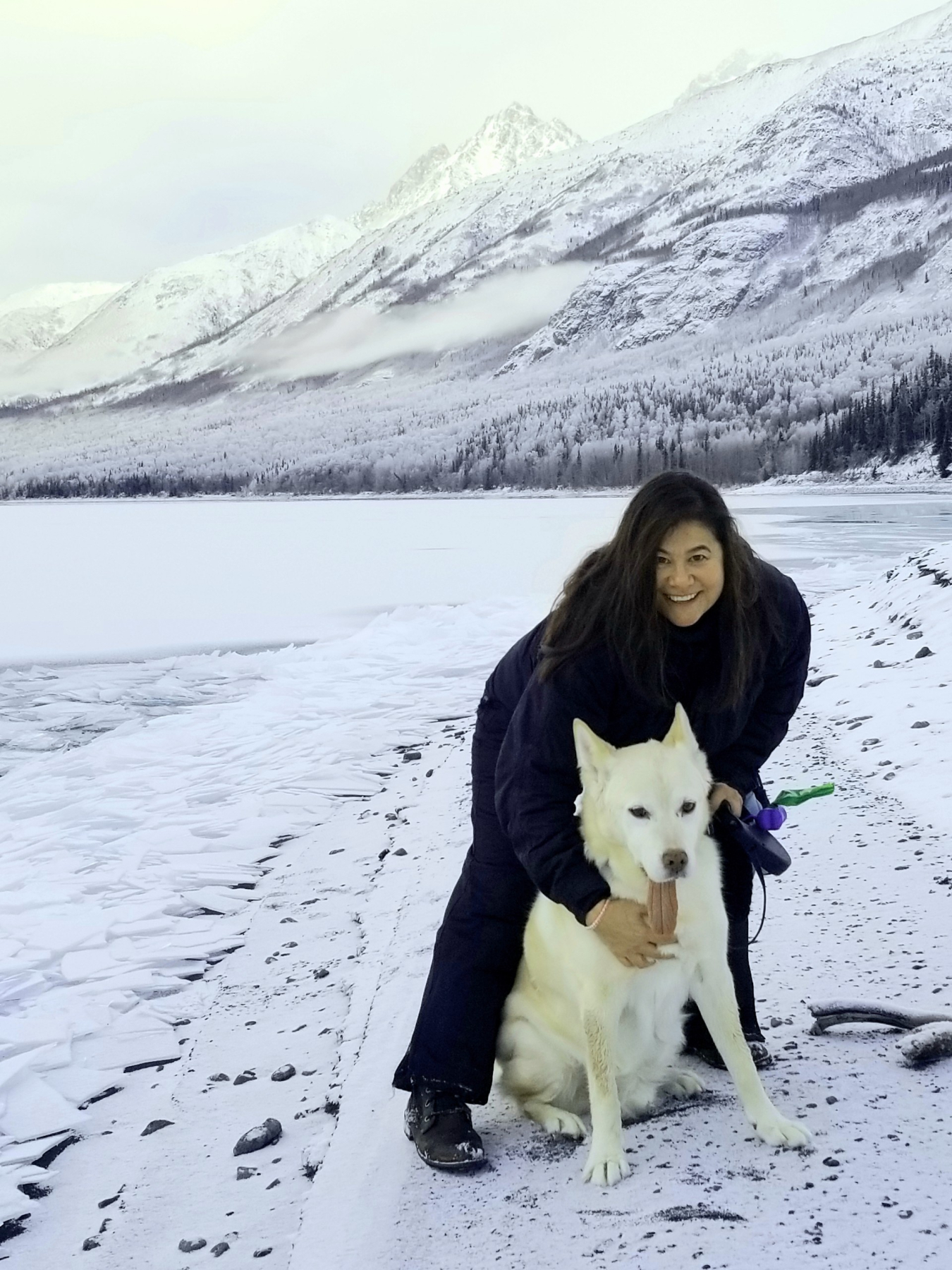Meet Annette Hard, who has lived in Alaska her entire life and and knows what it’s like to have exorbitant energy bills when living in rural Alaska. Today Annette works as a Business Cost Analyst for the Office of Clean Energy Demonstrations.
April 1, 2024The Arctic Energy Office is hosting a series of interviews to highlight the lives and achievements of some of DOE’s outstanding employees with Arctic and Alaska connections. Today meet Annette Hard, who has lived in Alaska her entire life and knows what it’s like to have exorbitant energy bills when living in rural Alaska. Annette lives in Palmer, Alaska, and works as a Business Cost Analyst for the Office of Clean Energy Demonstrations. If you're a Department of Energy employee and have Arctic connections or know someone at DOE who does, please connect at [email protected] so we can feature you in future editions.

Why did you want to work at the Department of Energy?
Someone sent me a link for an open position at the Office of Clean Energy Demonstrations (OCED) because they thought I would be a good fit. I understood what the job duties were for the position, but what exactly was Office of Clean Energy Demonstrations? I had never heard of it. So, I scoured the internet for every bit of information I could find about OCED. I watched YouTube videos, read reports from companies that worked with OCED, and through my various readings determined this was the place for me! I started in December of 2023 as a Business Cost Analyst.
I have lived in Alaska my whole life and I see, every day, the impact that climate change has in Alaska. I have lived in rural Alaska and know what it is like to have exorbitant heating and electricity bills because diesel fuel is delivered by barge only once or twice a year before the river freezes up. I see glaciers retreating, villages moved due to erosion, and creations of giant sinkholes from melting permafrost. We now have invasive plant life, animals, and insects in Alaska that we did not have 20 years ago.
I work at DOE because I know I will help make a difference to climate change, something I have an emotional connection to.
When did you live in Alaska?
I’m an Alaskan through and through! I was born and raised in Interior Alaska and because my husband, who is from Southeast Alaska, was an Alaska State Trooper and worked for the National Park Service, we were given the opportunity to live many towns in Interior, Western, and Southcentral Alaska. We have lived in Fairbanks, North Pole, Bethel, Tok, and Palmer, and have visited friends and family in many villages and towns throughout this great state!
Tell us about your experiences/childhood in the Arctic. What were some of your favorite memories from that time?
As someone growing up in Interior Alaska, I thought the extreme cold and the lengthy dark days in winter and the everlasting sunshine and hot weather in the summer is perfectly normal! My memories from childhood were that elementary school closed at -80 degrees F as the pipes might freeze, we would always bundle up and be out snowmachining, skiing, snowshoeing, building snow forts, massive snowball fights, looking up and seeing the northern lights dance, and my family always had people over on the weekends for dinner and games.
In the spring, summer, and fall in the endless sunshine we were always riding bikes, meeting up with friends, taking the boat upriver, berry picking and mushroom picking, fishing and hunting. When I started driving it was normal for the tires of the car to freeze flat at -60F and as you drove down the road you had to go slow to allow the tires to become round again! My childhood and adulthood are still much the same, although now I do a lot more hiking, have a garage for the car and do a lot more traveling throughout the state.

How has your time in Alaska shaped who you are today?
I know living in Alaska has given me the opportunity to be independent because of our remoteness, understand how to keep a pantry full due to costs and availability of goods, be resourceful, have a healthy respect for the outdoors, the desire to learn about other cultures and people, and how to always help people.
How does your time in the Arctic impact your perspectives at DOE?
Alaska is the only U.S. state that makes it part of the Arctic. We have polar bears (no penguins) walrus, whales, bears, fish, and so many other plant and animal species that are native only to Arctic regions. We see aspects of climate change every single day, we feel the temperatures warming both the air and the sea. This is not something that we hear about and it far away, it is real and it is changing Alaska in so many ways. The foresight and actual doing something about climate change by so many people who work at DOE gives me inspiration and hope for a better future for Alaska.
What do you love about your job?
Where to start?! I feel so fortunate working with such like-minded, welcoming people who also believe in clean energy. I know my part in the big picture of what OCED does is going to make a difference in the lives of so many people. Be it financially with the lowering of fuel and electricity bills in rural areas through the use of alternative energy solar/wind/geothermal projects or finding ways to keep the air and waterways healthier through carbon capture/nuclear for the planet. I love that my job helps bring innovation to market and in the long run will bring people and the planet hope for a cleaner future.

What’s your favorite place in the Arctic?
To just name one place in Alaska that is my favorite is difficult! We have the rainforest of Southeast with the giant trees and dense forests and bays teeming with wildlife, we have the Arctic (northern Alaska) where you can look out over the ocean and see forever, interior Alaska has the most beautiful golden birch trees and boreal forest (taiga – conifers) that stretch on as far as the eye can see, and there is western Alaska with mounds of tundra, crowberries, cranberries, blueberries, salmon and time seems to slow way down, and oh my goodness throughout Alaska we have some serious mountains to gape at!
Then there is the coastline and waterways. With over 33,000 miles of coastline there is always a place to skip rocks and just contemplate just how good we have it up here. But all in all, my favorite place in Alaska would be Sitka. The friendliness of the people, the volcanos, the ever-changing weather, the history, totems, the healing water, and the small-town feel (well, it is a small town) and walkability make it a favorite place….except when the weather is really bad and the plane doesn’t come in for a week or so.
Anything else you want to add?
I’m a native Alaskan, but not an Alaska Native (I am not from one of the Indigenous peoples). Alaska is not for everyone because of the extremes. There are places with 24 hours of daylight in the summer and 24 hours of darkness for months at a time. Alaska is a huge melting pot with a diversity of people. The Anchorage School District tallied (in 2022) 107 different languages spoken by students and their families.
I can totally brag about this state, but I am also well aware of the various downfalls of living in Alaska. We have 70+/day earthquakes (we had 55,000 (yes that many) in 2022 although we don’t feel most of them), there are logistical issues including time and cost to get anywhere outside Alaska, per capita we have one of the highest crime rates of the US, we have a high rate of depression, suicide, and violence, and don’t forget our high cost of living, which is exaggerated even more living in someplace not on the road system.
I have been deployed overseas on two different occasions (Department of Defense Civilian) and have had multiple TDYs (Temporary Duty Assignments) in various areas outside the state. I’ve traveled to other countries and each time I go elsewhere, I am continuously learning about other places be it the people, economies, cultures, or the country itself, but truly grateful to live in Alaska.

